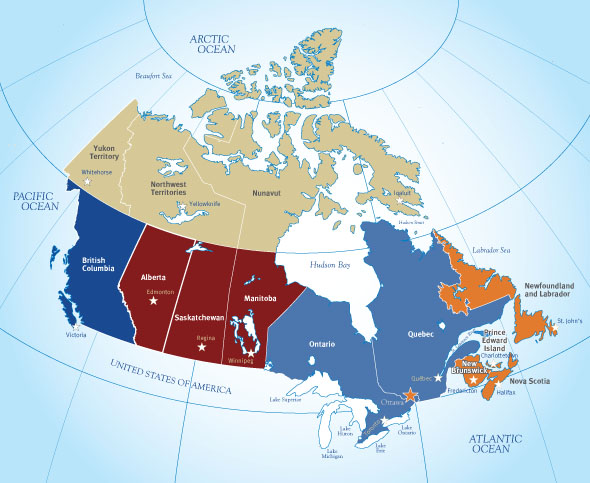(Provincial) Canadians and Their Pasts - Ignoring the Territorial North, Again
28 August 2014 - 12:08pm
 It isn’t a new experience, but it still feels disappointing when I come across a ‘national’ study that neglects the territorial North. I have written about this with regard to history education before. I resisted writing about this when I bought Burke & Milewski’s edited collection Schooling in Transition: Readings in Canadian History of Education (2012) and noticed that they didn’t mention the glaring neglect of the territories in their ‘Canadian’ collection (though Jason Ellis, a reviewer of the book, did notice).
It isn’t a new experience, but it still feels disappointing when I come across a ‘national’ study that neglects the territorial North. I have written about this with regard to history education before. I resisted writing about this when I bought Burke & Milewski’s edited collection Schooling in Transition: Readings in Canadian History of Education (2012) and noticed that they didn’t mention the glaring neglect of the territories in their ‘Canadian’ collection (though Jason Ellis, a reviewer of the book, did notice).
When I picked up Canadians and Their Pasts with the excitement of a history geek, curious Canadian, and optimistic reader - I hoped to find something different. The book is based on a survey that is “nationally representative”, aiming towards “regional and cultural identities” and including three “special samples”. There is a whole chapter devoted to the issue of place in Canadians’ views of the past, attending to the urban/rural divide as well as province/region. Some Aboriginal perspectives are featured specifically on pages 84-91 of the book. But…
Nowhere is there a mention of the territorial North broadly speaking, or the Yukon, NWT or Nunavut specifically. And what about Nunavik and Nunatsiavut? Nor (that I could find) is there an explanation for the decision to leave them out. The survey was conducted by phone across the country; that the territories could not be included in this effort puzzled me.
I really don’t mean to be antagonistic. My respect for all ‘The Pasts Collective’ authors, their project, and their contributions runs deep. But the collection doesn’t make me - born and raised north of 60° - feel at home.
So I asked The Pasts Collective what happened to the territories in their study. They chimed in to explain that undertaking this scale of research involved many tough and complicated decisions in managing costs and maintaining a sampling strategy - choices that affected the participation of several populations that they might have liked to include. In addition, I heard that the researchers had difficulty finding an appropriate and engaged northern partner to support the research and ensure it would be appropriate for the northern (especially Indigenous) population. Indeed, this warrants a whole other blog posting (or book!) - addressing the complexity of negotiating approaches to historical or educational research with northern peoples through and beyond the territorial requirement for research licensing and community consultation to ensure research benefits northerners.
This got me thinking: What might a researcher find if they were to survey Nunavummiut (people who live in Nunavut) about the ways they have engaged with history lately? Ok, yes, the territories have long, dark winters so people probably participate in their fair share of scrapbooking, browsing archival websites, and watching historical documentaries (there are some excellent ones on the North). But what more distinctive activities might come to the fore?
Here are some of my ideas:
- Participating in regional and national Truth Commissions
- Funding the collection of stories and installation of monuments to historical wrongs committed by the federal government
- Protecting language and culture through traditional knowledge, in accordance with their legal rights to do so
- Engaging Youth in documenting the past
- Disseminating histories digitally and through video
- Teaching all NWT and Nunavut students about the history of residential schools
- Advocating for a Nunavut heritage centre
It seems to me that most of these activities implicate other Canadians, and yet other Canadians seem to know very little of them.
Canadians have made Northerners - particularly Indigenous Northerners - part of their history. If there was ever any doubt about that, Stephen Harper is has clarified it over and over since 2006 on his summer tours. When I read the final chapter of Canadians and Their Pasts, entitled “Making History” I noted the authors’ point about history being in a constant state of ‘reconstruction’: “Citizens need to be prepared to evaluate various claims about the past” (p. 153). How will Canadian citizens be prepared to answer to territorial residents - and how will territorial residents come to see themselves as important to Canada - if the territories keep getting left out of national dialogues? We are in an era of devolution, land claims implementation, and massive resource mapping and extraction. These are all national issues.
I wish what Indigenous (and non-Indigenous) territorial residents think about history, how they think about history, and how they leverage the past to assert their present role in this country was of greater interest than it has been up to now. Perhaps the Canadians and Their Pasts finding that “regional and linguistic differences were not as significant as we had anticipated” (p. 160) would have been different with the inclusion of one of Canada’s most interesting - and still marginalized - populations. Perhaps this is a research project someone else should take up so as to add territorial voices to the data collected from “down south”!
What source have you used to learn or teach about the territorial North lately?
Photo credit: "Discover Canada": http://www.cic.gc.ca/english/resources/publications/discover/section-13.asp
Suggestion
"What might a researcher find if they were to survey Nunavummiut (people who live in Nunavut) about the ways they have engaged with history lately?"
Suggestion : "Cultural Narratives and Clarity of Cultural Identity: Understanding the Well-Being of Inuit Youth".

